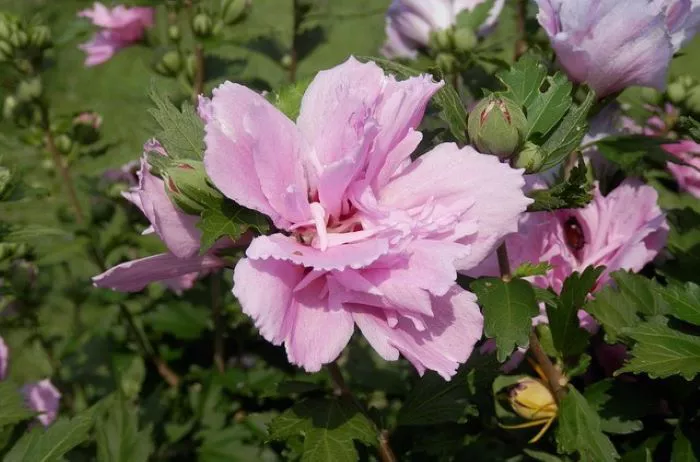Hibiscus flowers are among the most recognizable and beautiful blooms in the world. Known for their large size and vibrant colors, these flowers are popular in gardens, landscapes, and tropical settings. Understanding the characteristics of hibiscus flowers can enhance appreciation for their beauty and uniqueness. This article will explore the physical appearance of hibiscus flowers, their colors, shapes, and other distinguishing features.
General Characteristics of Hibiscus Flowers
Hibiscus flowers belong to the Malvaceae family and are native to warm, tropical regions. These flowers are typically large, measuring between 4 to 12 inches in diameter. The petals are soft and delicate, often with a silky texture. The overall structure of the flower is funnel-shaped, which adds to its appeal.
Hibiscus flowers usually have five petals, although some varieties may have more. The petals can be slightly overlapping, creating a full and lush appearance. The center of the flower features a prominent structure called the stamen, which is surrounded by the petals.
Colors of Hibiscus Flowers
One of the most striking features of hibiscus flowers is their vibrant color palette. Hibiscus flowers come in a wide range of colors, including red, pink, yellow, orange, white, and purple. Some varieties even exhibit multiple colors or unique patterns.
The colors can vary significantly depending on the species and cultivar. For instance, the tropical hibiscus often showcases bright, bold colors, while hardy hibiscus may have more muted tones. The intensity of the color can also change with the time of day and the angle of sunlight, adding to the flower’s dynamic beauty.
Petal Shape and Texture
The petals of hibiscus flowers are typically broad and flat, with a smooth texture. They can be slightly ruffled or have a wavy edge, depending on the variety. The petals often have a glossy appearance, which enhances their visual appeal.
In some species, the petals may have a gradient effect, where the color transitions from one shade to another. This can create a stunning visual impact. The texture of the petals is soft, making them delicate to the touch.
The Center of the Flower
The center of the hibiscus flower is equally captivating. The stamen, which consists of long, slender filaments, extends outward from the center. Each filament is topped with an anther that produces pollen. This structure is often a contrasting color to the petals, adding to the flower’s visual interest.
In many hibiscus varieties, the stigma is prominent and may be slightly raised above the stamen. The stigma is often a darker color, which helps attract pollinators. This central structure plays a crucial role in the reproductive process of the flower.
Foliage and Background
The leaves of the hibiscus plant are also noteworthy. They are typically dark green, glossy, and have a lobed or serrated edge. The foliage provides a beautiful backdrop for the flowers, enhancing their colors and shapes.
Hibiscus plants can grow as shrubs or small trees, and their leaves often grow in an alternate pattern along the stems. The combination of lush green leaves and vibrant flowers creates a striking visual contrast in gardens and landscapes.
Variations Among Species
There are many species of hibiscus, each with its own unique flower characteristics. For example, the Chinese hibiscus, commonly known as hibiscus rosa-sinensis, features large, showy flowers that can be single or double in form. The hardy hibiscus, such as hibiscus moscheutos, has larger blooms that can reach up to a foot in diameter and often have a more robust appearance.
Other species, like the swamp hibiscus, have flowers that are more delicate and can come in softer colors. Each species offers a different aesthetic, making hibiscus a versatile choice for gardeners.
Symbolism and Cultural Significance
Hibiscus flowers are not only admired for their beauty but also hold cultural significance in many regions. In Hawaii, the hibiscus is a symbol of hospitality and is often worn as a lei. In other cultures, hibiscus flowers represent love, beauty, and femininity.
The vibrant colors and striking appearance of hibiscus flowers make them popular in floral arrangements and decorations. They are often used in weddings and celebrations, adding a tropical flair.
Conclusion
Hibiscus flowers are truly remarkable with their large size, vibrant colors, and distinctive shapes. Their soft petals, prominent center, and lush green foliage create a stunning visual display. With numerous species and varieties, hibiscus flowers offer a diverse range of appearances and meanings. Whether in a garden, landscape, or as part of cultural traditions, hibiscus flowers continue to captivate and inspire. Understanding their characteristics allows us to appreciate the beauty and significance of these extraordinary blooms.


